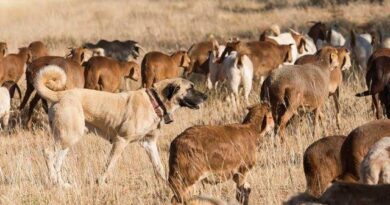The Benefits of Hydroponics and Aquaponics
Hydroponics and Aquaponics are two innovative methods of growing plants without soil, which can be a bit confusing, but don’t worry, I will explain it in simple terms.
Hydroponics is a way of growing plants in water, instead of soil. In hydroponics, plants get all the nutrients they need from a special solution mixed with water. This solution has everything the plant needs to grow big and healthy. It’s like giving plants a special drink that makes them grow really well.
Now, let’s talk about Aquaponics. It’s a bit like hydroponics, but it involves both plants and fish. In aquaponics, you have a special system where fish and plants work together. Fish live in a tank, and they produce waste.
But instead of being a problem, this waste is like food for the plants. The water from the fish tank is pumped to the plant beds, and the plants use the nutrients from the fish waste to grow. In return, the plants clean the water for the fish, so it’s a win-win situation!
One great thing about both hydroponics and aquaponics is that they use less water than traditional soil farming. They also allow you to grow plants in places where the soil might not be very good for farming, like in cities or deserts.
Another advantage is that you have more control over the growing conditions. You can adjust the amount of light, temperature, and nutrients to make sure the plants grow perfectly. It’s like being a plant scientist!
In hydroponics and aquaponics, you can grow all sorts of plants, from lettuce and tomatoes to herbs and even flowers. It’s a bit like having your own mini-garden indoors. Plus, because you don’t use soil, you don’t have to worry about weeds or pests that can harm your plants.
People all over the world are using hydroponics and aquaponics to grow fresh and healthy food. It’s a sustainable way of farming that can help us take better care of our planet.
So, to sum it up, hydroponics is about growing plants in water with a special nutrient solution, while aquaponics combines plants and fish in a mutually beneficial system. Both methods are eco-friendly, use less water, and allow for precise control over growing conditions. They’re like magic gardens that can thrive almost anywhere.
Read Also: Shih Tzu Dogs: Description and Complete Care Guide
The Benefits of Hydroponics and Aquaponics

There are many benefits to both hydroponics and aquaponics. Let’s explore some of the advantages of these innovative farming methods:
Benefits of Hydroponics
1. Water Efficiency: Hydroponics uses significantly less water compared to traditional soil-based farming. The water in the system is recirculated, reducing wastage.
2. Faster Growth: Plants in hydroponics systems often grow faster because they have constant access to nutrients and don’t need to search for them in the soil.
3. Higher Yields: With precise control over nutrient levels and environmental conditions, hydroponic crops can yield more produce per square foot compared to traditional farming.
4. No Soil-Borne Diseases: Since there is no soil involved, the risk of soil-borne diseases and pests is minimized, reducing the need for pesticides.
5. Space Efficiency: Hydroponic systems can be set up vertically or in small spaces, making them ideal for urban farming or areas with limited land.
6. Year-Round Cultivation: Hydroponics allows for year-round cultivation regardless of the external weather conditions, providing a constant supply of fresh produce.
Benefits of Aquaponics
1. Sustainable Ecosystem: Aquaponics creates a closed-loop ecosystem where fish waste provides nutrients for plants, and the plants filter and purify the water for the fish. It’s an eco-friendly, self-sustaining system.
2. Dual Harvest: You get two products from a single system – both fish and crops. This diversifies your produce and income potential.
3. Reduced Water Usage: Aquaponics uses less water than traditional aquaculture because the water is continuously recycled.
4. Organic and Chemical-Free: Because of the natural nutrient cycle, aquaponics is often considered organic, and there’s no need for synthetic fertilizers or pesticides.
5. High-Quality Produce: Plants grown in aquaponic systems tend to be healthier and have fewer contaminants, making them suitable for high-end markets.
6. Educational Value: Aquaponics is a great educational tool to teach kids and adults about biology, ecology, and sustainable agriculture.
7. Community and Local Food Production: Aquaponic systems can be scaled up or down, making them suitable for community gardens or local food production in areas with limited access to fresh produce.
In both hydroponics and aquaponics, the ability to control and optimize growing conditions leads to healthier plants and higher yields. These methods offer sustainable alternatives to traditional farming and contribute to food security while minimizing environmental impact.
Read Also: Pomeranian Dogs: Description and Complete Care Guide
Types of Hydroponics and Aquaponics

Here are the types of Hydroponics and Aquaponics in simple terms:
Types of Hydroponics
1. Deep Water Culture (DWC): In DWC, plants grow in containers with their roots submerged in a nutrient-rich water solution. An air pump adds oxygen to the water, helping the roots breathe.
2. Nutrient Film Technique (NFT): NFT systems have a shallow channel where a thin film of nutrient solution flows over the plant roots. This provides nutrients and oxygen, and the excess solution is collected and recirculated.
3. Drip Systems: Drip systems use a pump to drip nutrient solution onto the base of each plant. This method is precise and efficient, allowing for better control of nutrients.
4. Aeroponics: In aeroponics, plant roots hang in the air and are misted with a nutrient solution. This creates a highly oxygenated environment for roots to grow.
5. Wick Systems: Wick systems are simple and don’t require pumps. They use a wick to draw nutrient solution from a reservoir to the plant roots. It’s like a plant’s straw for drinking.
6. Ebb and Flow (Flood and Drain): These systems periodically flood the plant containers with nutrient solution and then drain it away. This cycle provides nutrients and oxygen to the roots.
7. Hydroponic Raft (Deep Flow Technique): In this method, plants float on a raft on a shallow tank filled with nutrient-rich water. The roots dangle into the water below.
Types of Aquaponics
1. Media-Based Aquaponics: In this type, plants grow in containers filled with a growing medium like gravel or clay pellets. The water from the fish tank is pumped into these containers, and the plants filter it.
2. Deep Water Culture (DWC) Aquaponics: Similar to hydroponics, plants grow directly in nutrient-rich water with their roots submerged. Fish waste provides the nutrients needed by the plants.
3. Nutrient Film Technique (NFT) Aquaponics: This combines NFT hydroponics with aquaponics. The nutrient solution from the fish tank flows in a thin film over the plant roots.
4. Vertical Aquaponics: Vertical systems stack plants in layers, maximizing space. Water moves from the top to the bottom, allowing both fish and plants to thrive in a compact area.
5. Barrel Aquaponics: Some creative aquaponic enthusiasts use repurposed barrels or drums to create compact systems. These can be a fun DIY project.
6. Commercial Scale Aquaponics: Large-scale aquaponic farms can grow a variety of crops and fish for commercial purposes, providing sustainable produce to local markets.
7. Backyard Aquaponics: Smaller, backyard setups are popular for home gardeners who want to grow their own fresh produce and enjoy fishkeeping.
Both hydroponics and aquaponics offer various options to suit different needs, whether you have limited space at home or want to start a larger commercial operation. Each type has its advantages, and the choice depends on factors like space, resources, and personal preferences.
Read Also: Exploring the World of Garbage Companies









